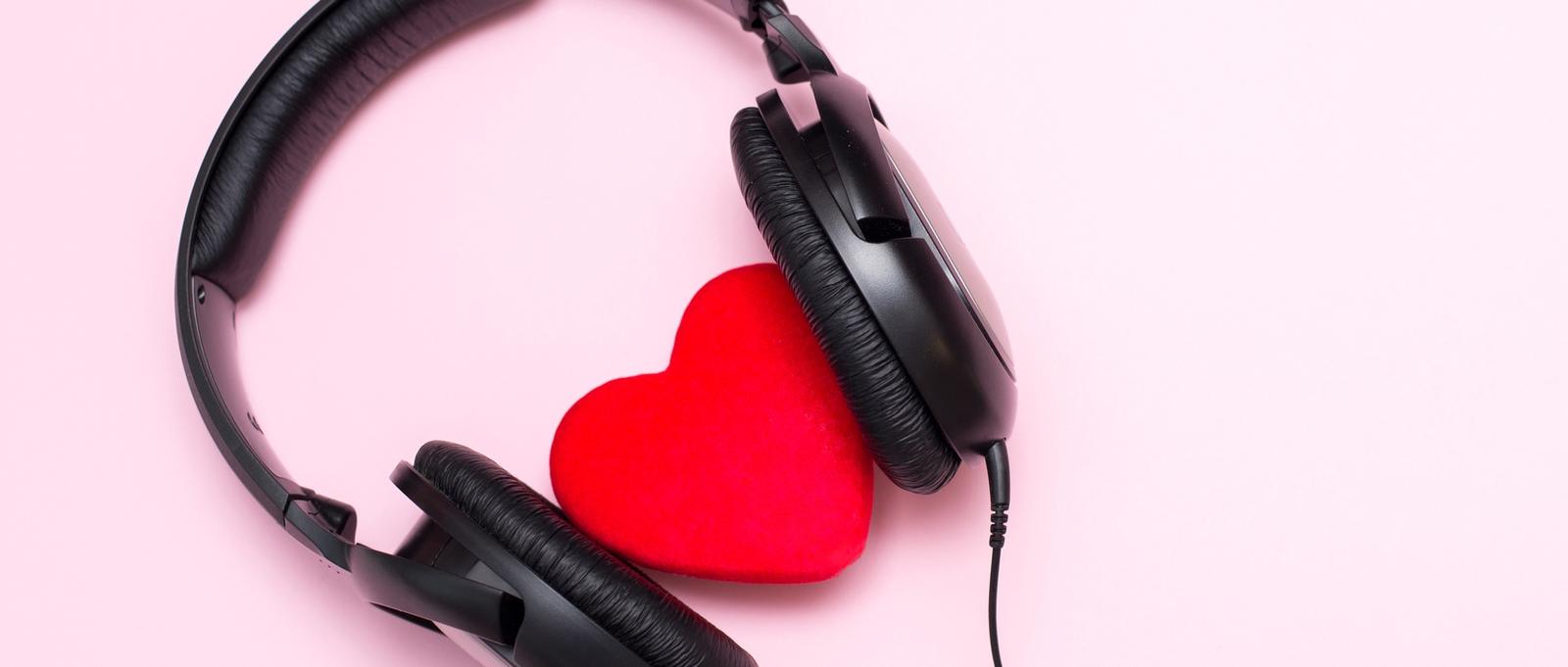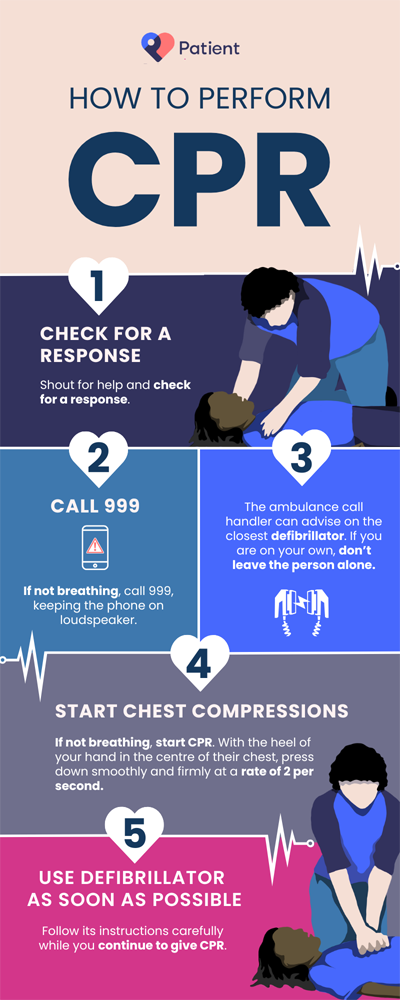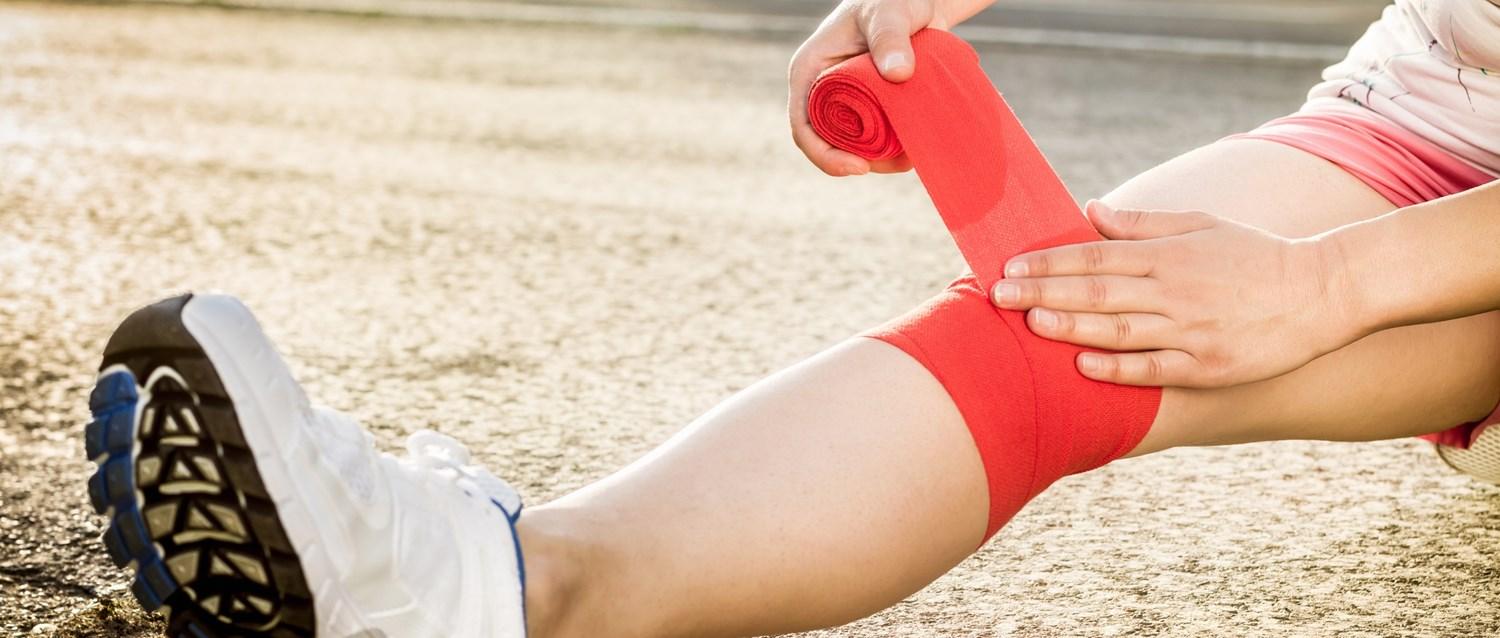
The importance of learning CPR: Emma tells her story
Peer reviewed by Dr Krishna Vakharia, MRCGPAuthored by Victoria RawOriginally published 18 Jun 2025
Meets Patient’s editorial guidelines
- DownloadDownload
- Share
- Language
- Discussion
According to the British Heart Foundation (BHF) 30,000 people have a cardiac arrest each year. Fewer than one in ten of these people will survive. Cardiac arrest can happen to anyone, anywhere, at any time - and without warning.
Knowing how to perform CPR could double someone's chances of surviving it. We hear from real-life heroes who've saved lives through CPR. Their stories highlight the vital importance of learning this life-saving skill.
In this article:
Continue reading below
What is CPR?
CPR (cardiopulmonary resuscitation) is an emergency procedure to get your heart beating again when it unexpectedly stops (cardiac arrest). When your heart stops beating it stops pumping blood around your body - starving your brain of oxygen. The longer your brain goes without oxygen, the greater the chance of brain damage and death. CPR can keep your blood pumping until professional medical help arrives.
How to do CPR

Why is learning CPR important?
Without CPR, your chance of dying dramatically increases after cardiac arrest. By learning CPR, you can become a hero and save someone else's life. Minutes spent learning CPR can mean a lifetime saved. The British Heart Foundation's RevivR campaign puts this power in your hands. Taking its free 15-minute online CPR course means you could be ready to act in an emergency.
Continue reading below
Emma's story
The importance of learning CPR: Emma tells her story
For Emma Kenyon, a typical February evening in 2021 turned into a medical emergency when her husband Matt went into cardiac arrest at their West Yorkshire home. Emma - a mum of two - immediately sprang into action, performing CPR on Matt until emergency services arrived.
"It began with him being unable to sleep because of what he thought was bad indigestion," says the former design manager. "He then developed a pain in his chest that travelled down his arms and across his back.
"I called 111 for advice, who sent an ambulance as a precaution. He started to feel a little better until he suddenly went dizzy and fell unconscious. That's when I called 999."
With no prior knowledge of CPR, Emma relied on the emergency call handler, who coached her through each step. In what must have been a terrifying experience, Emma followed the instructions closely, performing CPR on Matt until the paramedics got there.
Thankfully, her quick thinking and careful attention to the operator's guidance helped save her husband's life.
"Since Matt's heart attack and cardiac arrest, I set up a Facebook group called Local Lifesavers that provides free CPR training opportunities to members of my local community. About 300 people have attended these courses over the last few years - that's 300 people who before this training might not have been able to act in an emergency."
Emma is raising funds to replace the defibrillator pads at Emley Moor Working Men's Club, West Yorkshire. This is to ensure their availability for emergencies and support ongoing maintenance.
For more inspiring stories about the life-saving power of CPR, tune in to Andy's story.
How to do CPR
Patient picks for First aid

Treatment and medication
What supplies do you need for a sports first aid kit?
Sport often tests the limits of our physical abilities, sometimes resulting in injury, so a dedicated first aid kit can really come in handy for quick, effective relief. But deciding on the contents can be challenging, given that they are often dictated by the sport in question.
by Danny Chadburn

Treatment and medication
Essential first aid items for your home
We all like to be prepared for emergency medical situations at home, especially those of us living with children, the elderly or anyone particularly accident-prone. From covering up a cut to treating a severe burn, a well-stocked first aid kit can prove pivotal to a patient's recovery.
by Danny Chadburn
Continue reading below
Article history
The information on this page is peer reviewed by qualified clinicians.
Next review due: 18 Jun 2028
18 Jun 2025 | Originally published
Authored by:
Victoria RawPeer reviewed by
Dr Krishna Vakharia, MRCGP

Ask, share, connect.
Browse discussions, ask questions, and share experiences across hundreds of health topics.

Feeling unwell?
Assess your symptoms online for free